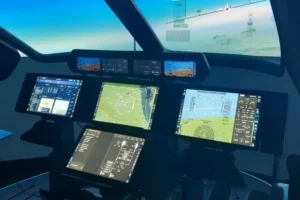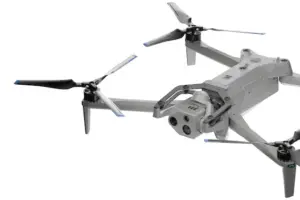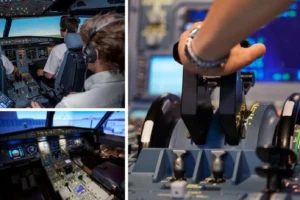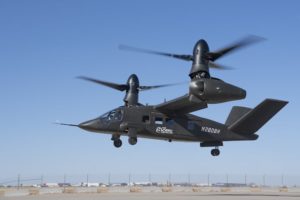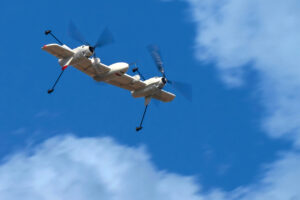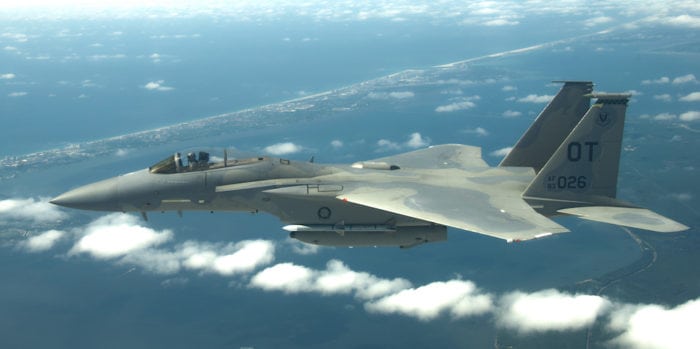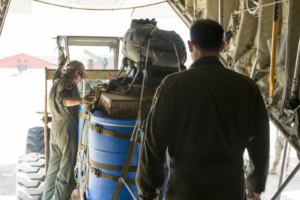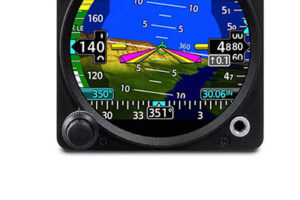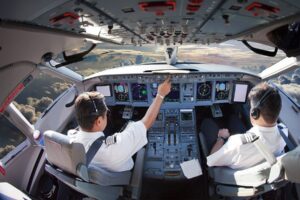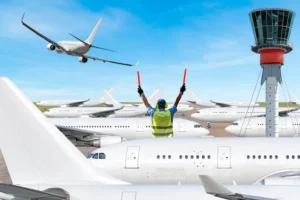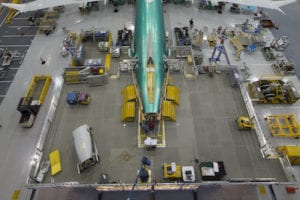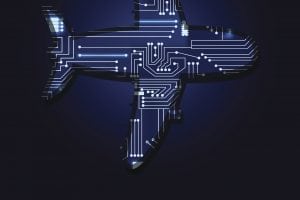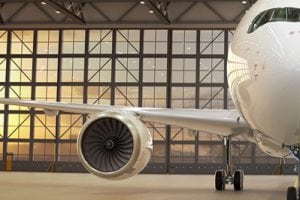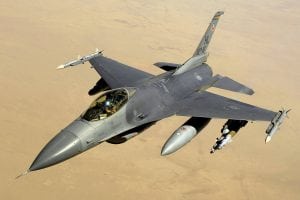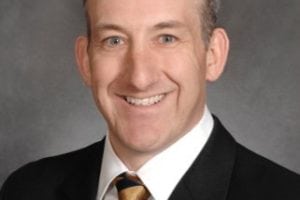Educating Technicians
By By Charlotte Adams | October 1, 2013
Send Feedback
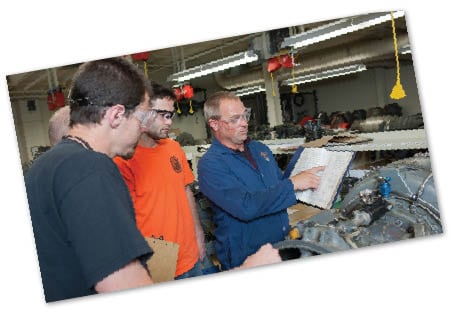 |
| Aviation Maintenance Science students at Embry-Riddle Aeronautical University. |
A number of schools teach avionics maintenance, but until fairly recently, there has been no standard, portable certificate attesting to a graduate’s or industry-taught veteran’s understanding of avionics basics and no widely accepted list of avionics subjects around which to build a real-world curriculum.
FAA has its A&P certificate, but that’s for airframe and power plant mechanics and covers avionics comparatively lightly. According to Rick Ochs, president of the repair station and authorized service center, Spirit Avionics, “[An A&P certificate] doesn’t hold much relevance to current avionics technology.”
Al Helfrick, a professor at Embry-Riddle Aeronautical University (ERAU), says while the “classic” A&P certification does include some basic electricity, navigation and instruments, there is a long-standing debate about its relevancy to modern avionics. “The idea that this very simplified [A&P] syllabus is going to qualify someone to be certified to do return to service for avionics is rather weak,” he says.
Yet, as other observers point out, Part 147 (A&P) schools are regulated by FAA, so they have to stick to the requirements — if they add to or subtract from the requirements, they could find themselves out of compliance.
So FAA regulation is a double-edged sword. Yes, the government blesses your A&P certificate and, yes, the agency would like anyone touching an airplane to have one, but, newly minted A&Ps may be very out-of-date in avionics in spite of their achievements.
 |
| A student in the avionics program at Tarrant County College in Fort Worth, Texas. The college, a NCATT accredited training provider, offers associate degrees and certificate programs in Airframe Maintenance/ Electronics Technology and Aircraft Electronics Line Maintenance. |
FAA also has repairman’s certificates, but these are good only at the requesting repair stations. The Federal Communications Commission (FCC) has a general radiotelephone operator license, which is well regarded in the industry but is not specific to aviation.
Overall, the need for properly trained maintenance personnel is growing. According to a Boeing report released in August, 556,000 new commercial airline maintenance technicians will be needed worldwide by 2032. However, according to the company, the introduction of more efficient and smarter airplanes will require fewer mechanics over time, as aging aircraft are retired from service. New airplane technologies featuring more advanced components are likely to lead in some areas to lower maintenance requirements and corresponding lower technician demand, according to the company.
AET
Enter the Aircraft Electronics Technician (AET) standard, developed with industry and government including military and FAA involvement by the National Center for Aerospace and Transportation Technologies (NCATT), a nonprofit organization in Fort Worth, Texas. The first AET certification exam was given in 2006, and NCATT says there are now around 2,600 individuals who have passed the test and are AET certified.
The AET standard outlines the avionics community’s sense of the fundamentals that every avionics technician should know. Among them are the basics of direct and alternating current; circuit theory of operation, troubleshooting, calculations and measurements; resistors, inductors, capacitors and transformers; analog circuits and power supply circuits; and digital logic.
Since the AET standard describes a level of fundamental knowledge, it doesn’t change much, says Rick Hestilow, NCATT’s director of standards, certification and accreditation. But the organization also has developed AET add-ons, or endorsements, in areas such as autonomous navigation systems, dependent navigation systems, radio communications systems, and onboard communication and safety systems that build on that foundation. Thanks in part to the fact that the AET is not regulated, it is better able to keep current with what the industry needs. Repair station executives, for example, are very interested in a new set of AET endorsements — now in the works — relating to avionics installation and integration.
 |
| At Embry-Riddle Aeronautical University, the Avionics Line Maintenance program is a minor within its four-year Aviation Maintenance Science degree program. Students spend four semesters in the A&P program and one semester in the optional Avionics Line Maintenance program. |
While the Part 147 curriculum includes subjects such as basic electricity, aircraft electrical systems and communication and navigation systems, the AET standard covers not only Part 147 electrical subjects but also an additional 260 avionics subjects, explains Hestilow, who is an A&P. Navigation and communication are covered in AET endorsements.
NCATT also certifies that schools meet its standards. ERAU’s Avionics Line Maintenance curriculum, for example, is NCATT certified, says Neill Fulbright, program coordinator. NCATT has accredited 23 other schools and training programs, including those run by the Community College of the Air Force (CCAF), Tarrant County College in Texas, and FlightSafety International facilities in Georgia, Arizona and Kansas. (See http://ncatt.org/pages/training-accredited-providers.)
Besides helping a technician to get in the door for an interview, the AET certificate provides tangible value for military personnel. According to Hestilow, the “Air Force, Navy and Army do reward individuals for the AET and other NCATT certification[s].” The certifications can be used for promotion points, and in the Air Force a service member who achieves AET certification can receive five credit hours toward a degree from the CCAF.
The AET certification has wide recognition among the military services, repair stations, avionics manufacturers, and many in the training industry. But it’s not universally accepted. Commercial aviation, for example, has been less receptive than corporate and general aviation.
 |
| At Spirit Avionics, a repair station and authorized service center based in Columbus, Ohio, the AET is a prerequisite for new technicians looking to be avionics technicians. |
“The airlines are interested, but they have issues that really are tied to organized labor,” Hestilow says. Although the AET is something that is applicable to all aviation categories, commercial aviation has issues with labor unions which may or may not want extra certifications, agrees Mike Adamson, vice president of member programs and education with the Aircraft Electronics Association (AEA), a group that represents repair stations and companies involved in general aviation.
“We’d like to think [the AET] is the default standard, but in order to support something like that, you’d have to have a lot more certified technicians,” Adamson says. Right now AETs are only a fraction of the 140,000 A&Ps. On the other hand, if you ask industry people who participate on the standards committees and are hiring, they’d say there’s nothing better — nothing close to the AET, he says. “But, just because they and we think that, it doesn’t mean the airlines are going to recognize it.”
In an ideal world, FAA would point to an organization like NCATT through some advisory material to the effect that the AET is the de facto standard for avionics technicians, Adamson says. Perhaps there could be some equivalency with something like repairman certificates, he adds.
Nevertheless, AET packs a punch in business and general aviation. “We’ve seen [it] in ads as a requirement for placement,” Adamson says. It’s also sometimes viewed as something employers would like their technicians to acquire, he says. “So it’s absolutely used as a hiring or a screening tool for applicants.”
Richardson Aviation, a corporate operator, thinks highly enough of the AET that it contracted with Tarrant County College, one of NCATT’s earliest partners, to put a majority of its technicians through the program. None of them has actually taken the test yet, but at least half a dozen employees are expected to achieve the credential in the next year to 18 months, says Jim Sparks, director of aircraft maintenance.
The company encourages and subsidizes employees’ efforts to get the certificate. “It shows you’ve got the basic knowledge, but within our group, it’s more showing a willingness to go out and achieve,” Sparks says. In fact, Richardson plans to require it for new hires, he says. “The AET is about as good as it gets” for avionics.
Back in the ‘70s, there was a clear separation between the people who worked on airframes, engines and avionics, Sparks says. But now with new aircraft, “you don’t know where avionics stops and airframe begins,” he jokes. The AET is essential, he asserts.
As for official recognition of the AET, Sparks says the best possible outcome would be a partnership between the regulators and the industry, something that more or less exists now. “I’d like the FAA to support the initiative without actively regulating it, but I don’t want it to become a bureaucracy,” he says.
“In our business A&Ps are all-purpose,” Sparks says. But the A&P curriculum really hasn’t changed since the outset, he adds. Areas like digital electronic engine controllers, high-speed data, Wi-Fi cabins and Ethernet cables are not even touched on.
There’s no other measuring device like the AET to determine a person’s knowledge level, says Mike LaConto, avionics sales manager at Epps Aviation, a fixed-based operator and repair station. Although Epps currently doesn’t require employees to take the test, the company encourages them to do so and subsidizes the effort. The company also encourages AETs to get the A&P license and helps them with the costs.
Atlanta-based Epps Aviation also uses the AET test and certification as a pre-employment screening device because it provides a better benchmark of where a technician is than a conversation or a resume, LaConto says. Although the FCC rating is a plus, the AET “really helps to define an actual avionics technician.” Currently half of the 12 technicians in the company’s avionics shop have AET certifications.
At Spirit Avionics, meanwhile, the AET is a prerequisite for new technicians looking to be avionics technicians, Ochs says. “You know AETs have got the fundamentals down and have a good foundation,” so “you can build a journeyman or master technician out of them.” Ochs said he is also looking forward to NCATT’s avionics installation and integration endorsements. “A good part of the work we do is avionics installation,” he says. That involves interfacing a new box with existing boxes and data buses. “There’s no standard for that now.”
Maintenance at ERAU
The Avionics Line Maintenance program is a minor within ERAU’s four-year Aviation Maintenance Science degree program. The A&P is a prerequisite for the Avionics Line Maintenance program. Students spend 16 months (four semesters) in the university’s A&P program and one semester in the optional Avionics Line Maintenance program.
A combination of book work and learning-by-doing, the program entails six hours a day in lectures or labs. One of the high points is building a complete instrument panel for a general aviation aircraft. There is only room for nine instrument panel stations — each one fully wired and integrated by a team of two students — which limits the number of students to 18 per semester.
“We encourage students to take the AET [exam],” Fulbright says. “Companies are looking for the FCC license or the AET, if not both,” as well as the A&P license.
Fulbright updates the Avionics Line Maintenance program every semester. He tracks industry activity and receives input from companies like FedEx. As a result, he has recently beefed up the fiber optic technology segment and updated data bus training.


